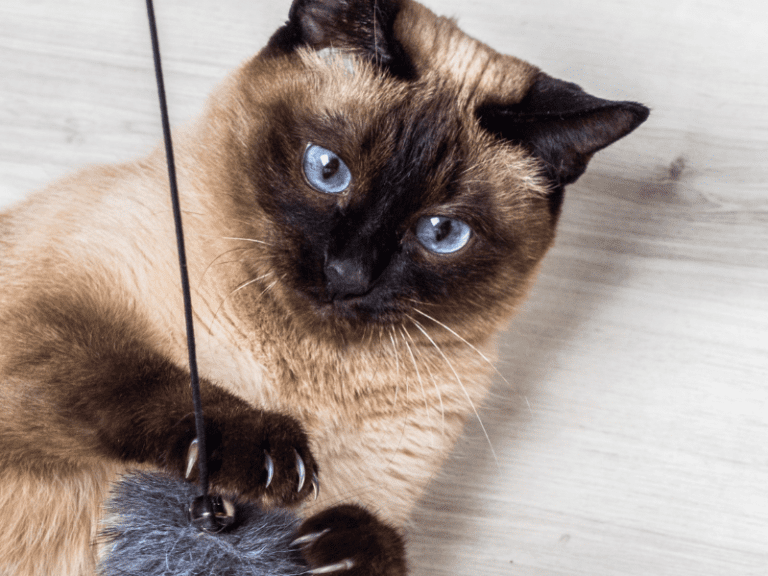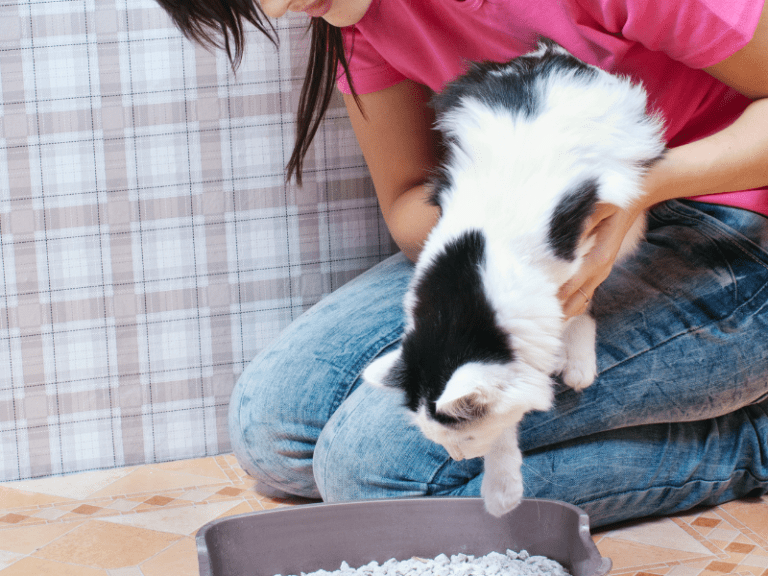Decoding Cat Communication for a Purr-fect Bond 🐾
FULL DISCLOSURE: The links I share in this course ARE my affiliate links. This means I earn a commission, at no extra cost to you. In fact, sometimes you’ll get a discount or free credits just FOR using my link. 🙂
Ready to become the ultimate cat whisperer and amp up the bond with your whiskered companion?
Deciphering their body language is like getting a VIP backstage pass into their thoughts and emotions. As fellow cat enthusiasts, we've put together a purr-fectly delightful guide to help you read those feline cues and avoid potential scratches. 🐈
Join us on this enchanting journey as we delve into the paws-itively mesmerizing world of kitty communication.
By the time we're done, you'll be on your way to being a master at preventing miscommunication and nurturing a safe, happy bond with your furry friend. 🐾
😺 Relaxed and Happy Cat Communication:
A content cat will have a gently swishing tail, relaxed eyes, and a soft body posture. They might even purr in sheer bliss! This means they're feeling purr-fectly cozy and comfy. Let's break down these signs of happiness:
- Half-closed eyes: When a cat is relaxed and happy, they may squint or slowly blink their eyes. This slow blink is a sign of trust and affection, often referred to as a “kitty kiss.”
- Purring: A content cat will often purr, signaling they're feeling comfortable and safe. This soothing vibration can even indicate they're in a state of pure bliss.
- Kneading: Happy cats may knead their paws on a soft surface, reminiscent of their kittenhood when they kneaded their mother's belly for milk. This behavior shows they're at ease and content.
🐾 Playful Cat Communication:
A frisky kitty will stalk, pounce, and swat with excitement. Playtime is crucial for their well-being, so let the games begin with their favorite toys! Here's how to identify a playful cat:
- Chattering: When a cat is feeling playful, they may chatter their teeth while watching birds or other prey. This mimics the action of biting down on their target and is a sign of excitement.
- The sideways hop: Playful cats will often engage in a sideways hop, bounding toward or away from their playmate with their back arched and fur puffed up.
- Stalking and pouncing: Frisky felines will stalk and pounce on toys or other objects, showcasing their natural hunting instincts.
😨 Fearful or Anxious Cat Communication:
Scared cats may arch their back, puff up their fur, or display signs of stress. Time to put on your detective cap and identify potential triggers, then offer them a safe haven to relax. Look out for these signs of fear or anxiety:
- Puffed-up fur: When a cat is frightened, they may puff up their fur to appear larger and more threatening to potential predators.
- Hissing and growling: Cats may hiss or growl when they're scared, signaling they're feeling threatened and want to be left alone.
- Hiding: An anxious cat may seek refuge under furniture or in small, enclosed spaces where they feel safe.
😾 Aggressive Cat Communication:
Feisty felines might hiss, growl, or adopt a stiff posture. Keep your cool, give them space, and eliminate any triggers. These are some signs of aggression:
- Swishing tail: An agitated cat will often swish their tail back and forth rapidly, indicating they're upset or annoyed.
- Ears flattened: An aggressive cat may flatten their ears against their head, signaling they're ready to strike.
- Biting or scratching: Cats may resort to biting or scratching when they feel threatened or cornered.
🚫 Preventing Scratches Cat Communication:

To stay on your cat's 😺 good side, observe and respect their body language, approach with caution, monitor interactions, avoid interrupting meals 🍲 or catnaps 😴, be mindful of your own body language, and learn to recognize the warning signs. Follow these tips for a scratch-free relationship:
🐾 Let the cat set the pace:
Allow your cat to approach you on their terms. This helps build trust and shows respect for their boundaries. Be patient and wait for them to initiate contact. Remember that some cats are more independent than others and may need more time to warm up to you.
👀 Read their body language:
Pay attention to your cat's signals, and learn to recognize when they're feeling uncomfortable or agitated. Back off if they show signs of distress. Look for flattened ears, dilated pupils, hissing, growling, or a rapidly swishing tail as indicators of unease.
🤲 Use gentle, slow movements:
Sudden or fast movements can startle your cat, so approach them calmly and move slowly to avoid triggering their defensive instincts. Keep your movements predictable, and avoid reaching over their head or looming above them, as this can make them feel threatened.
🐈⬛ Proper handling techniques:
When picking up or holding your cat, use proper handling techniques. Support their body with one hand under the chest and the other under the hindquarters. This provides a sense of security and reduces the chance of them feeling trapped or uncomfortable.
🏡 Introduce new people, pets, or environments gradually:
Sudden changes can stress your cat, increasing the likelihood of scratches. When introducing new people, pets, or environments, take it slow and give your cat time to adjust.
💅 Provide appropriate outlets for scratching:
Cats have a natural instinct to scratch. To prevent them from scratching you or your furniture, provide them with scratching posts, mats, or cardboard scratchers. Regularly trim their nails to reduce the risk of injury.
🌟 Encourage positive interactions:
Reinforce good behavior with treats, praise, or petting when your cat interacts with you in a gentle and friendly manner. This helps create positive associations with human contact.
🚦 Learn your cat's limits:
Each cat is unique and may have different tolerance levels for petting, play, or handling. Learn your cat's limits and respect them to avoid overstimulating or upsetting your feline friend.
By implementing these tips 📝 and understanding your cat's body language, you can significantly reduce the risk of scratches and create a harmonious, loving relationship with your furry companion. Remember, patience and consistency are key 🔑 in building trust and fostering a strong bond with your cat.
💕 Building a Strong Bond:

By tuning in to your cat's signals and respecting their boundaries, you can prevent miscommunication, scratches, and enjoy a heartwarming partnership with your furry friend. Here are some ways to strengthen your bond with your cat:
- Spend quality time together: Dedicate time each day for cuddling, play, or grooming to build trust and deepen your connection.
- Create a comfortable environment: Provide your cat with cozy resting spots, scratching posts, and hiding places to make them feel safe and secure.
- Positive reinforcement: Use treats, praise, and gentle touch to reward good behavior and encourage trust in your relationship.
🕵️♂️ Unraveling the Mysteries of Kitty Communication 🐾
Understanding your cat's body language is an essential aspect of building a strong, lasting bond with your whiskered companion.
By respecting their boundaries and learning to decipher their cues, you'll prevent miscommunication and create a nurturing environment for your feline friend to thrive. With patience, love, and attention to their signals, you'll be well on your way to becoming a master cat whisperer.
So, grab your detective cap and start unraveling the mysteries of kitty communication!
💌 Join Our Meow-velous Pack:
Stay whisker-ly updated on cat behavior, training tips, and overall well-being by joining our email list. Embark on the first step towards a deeper connection with your feline friend! Sign up now! 🐾







